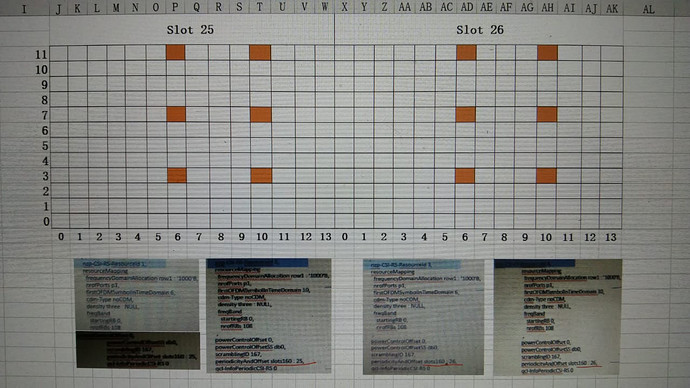I am also in doubt here…about TRS.
If csi-rs with 8 ports is transmitted from one single logical antenna port it does not have a high gain as it is not beamformed.
Then how does it reaches the UE?
So we have 8 csi-rs ports with 8 csi-rs reference signals that do not interfere each other ( when one is transmitting the other 7 don’t) but are not beamformed.
Also I have mmwave logs with 30 nzp-csi-rs resoruce ids !!! How should we understand those ones?
That we have 30 or less csi-rs beams?
For almost all of them trs-info=true
If 8 SSBs and each with 4 csi-rs beams it means there can be 8x4=32 csi-rs beams to cover the whole sector area for pdsch data. But if it’s like this what is the difference between n1xn2 being 4x4 or 2x2 or 4x4 ? Number of sector beams is given by n1xn2xo1xo2 this is what it says in 5G in bullets.
This is what PMI is for: to chose among one of the beams given by n1xn2xo1xo2
If each ssb has 4 csi-rs beams how do we get into different number of beams like in the picture above?
This is also a good picture to understand the PMI matrix, how it is computed, which is the signal for each csi-rs port and how are layer shifted in phase for each csi-rs port:

One logical antenna port is one csi-rs port
In the example above there are 4 pdsch layers and 8 csi-rs ports ( 8 logical antenna)
All those numbers in teh PMI matrix are computed from n1,n2,o1,o2, number of layers, numbers of csi-rs ports and UE reports ( i1,1 i1,2 i1,3 and i2).
